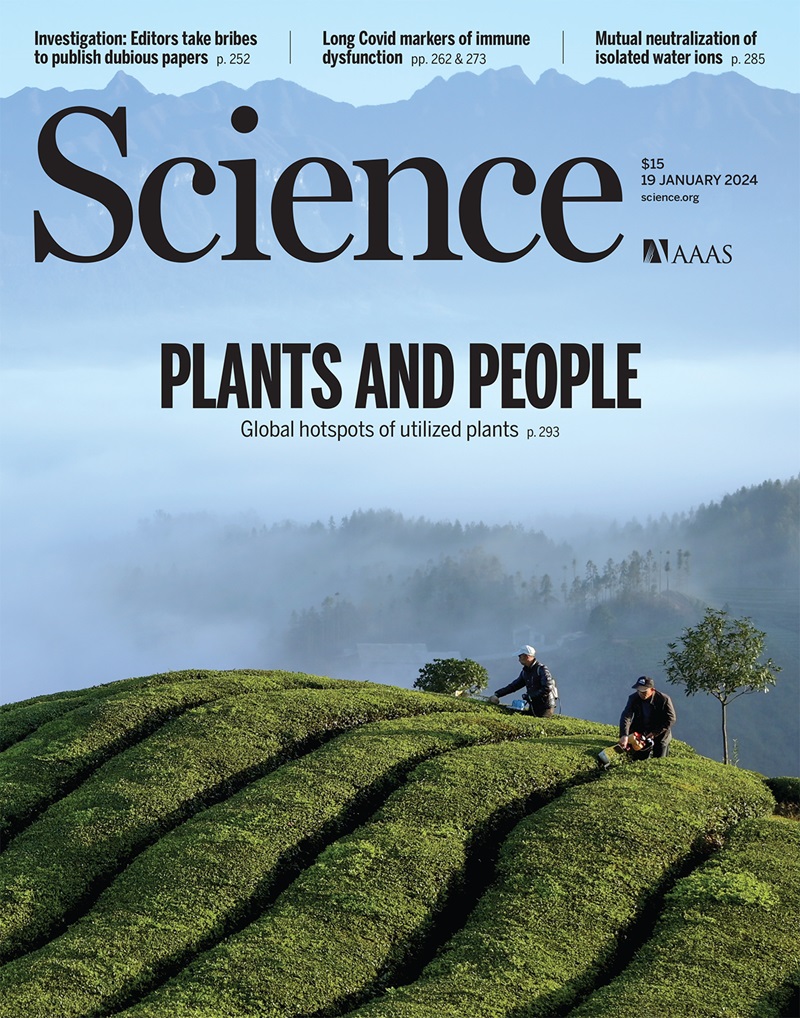由共同包层演化形成的脉冲星-氦星致密双星系统
IF 44.7
1区 综合性期刊
Q1 MULTIDISCIPLINARY SCIENCES
引用次数: 0
摘要
在双星系统中,当一颗演化中的恒星的大气层膨胀到环绕其轨道运行的伴星时,就会出现恒星共同包层。据预测,这样的系统会迅速进化,喷出恒星的外壳,让伴星在一个被剥离的恒星周围的更紧密的轨道上运行。我们利用无线电定时技术确定了一颗脉冲星PSR J1928+1815,它的自旋周期为10.55 ms,位于一个紧凑的双星系统中,轨道周期为3.60小时。伴星的质量为1.0到1.6个太阳,在17%的轨道上遮蔽脉冲星,并且在其他波长上未被探测到,因此它很可能是一颗剥离的氦星。我们把这个系统解释为最近经历了一个共同的包络阶段,产生了一个紧凑的二进制。本文章由计算机程序翻译,如有差异,请以英文原文为准。
A pulsar-helium star compact binary system formed by common envelope evolution
A stellar common envelope occurs in a binary system when the atmosphere of an evolving star expands to encompass an orbiting companion object. Such systems are predicted to evolve rapidly, ejecting the stellar envelope and leaving the companion in a tighter orbit around a stripped star. We used radio timing to identify a pulsar, PSR J1928+1815, with a spin period of 10.55 ms in a compact binary system with an orbital period of 3.60 hours. The companion star has 1.0 to 1.6 solar masses, eclipses the pulsar for about 17% of the orbit, and is undetected at other wavelengths, so it is most likely a stripped helium star. We interpret this system as having recently undergone a common envelope phase, producing a compact binary.
求助全文
通过发布文献求助,成功后即可免费获取论文全文。
去求助
来源期刊

Science
综合性期刊-综合性期刊
CiteScore
61.10
自引率
0.90%
发文量
0
审稿时长
2.1 months
期刊介绍:
Science is a leading outlet for scientific news, commentary, and cutting-edge research. Through its print and online incarnations, Science reaches an estimated worldwide readership of more than one million. Science’s authorship is global too, and its articles consistently rank among the world's most cited research.
Science serves as a forum for discussion of important issues related to the advancement of science by publishing material on which a consensus has been reached as well as including the presentation of minority or conflicting points of view. Accordingly, all articles published in Science—including editorials, news and comment, and book reviews—are signed and reflect the individual views of the authors and not official points of view adopted by AAAS or the institutions with which the authors are affiliated.
Science seeks to publish those papers that are most influential in their fields or across fields and that will significantly advance scientific understanding. Selected papers should present novel and broadly important data, syntheses, or concepts. They should merit recognition by the wider scientific community and general public provided by publication in Science, beyond that provided by specialty journals. Science welcomes submissions from all fields of science and from any source. The editors are committed to the prompt evaluation and publication of submitted papers while upholding high standards that support reproducibility of published research. Science is published weekly; selected papers are published online ahead of print.
 求助内容:
求助内容: 应助结果提醒方式:
应助结果提醒方式:


